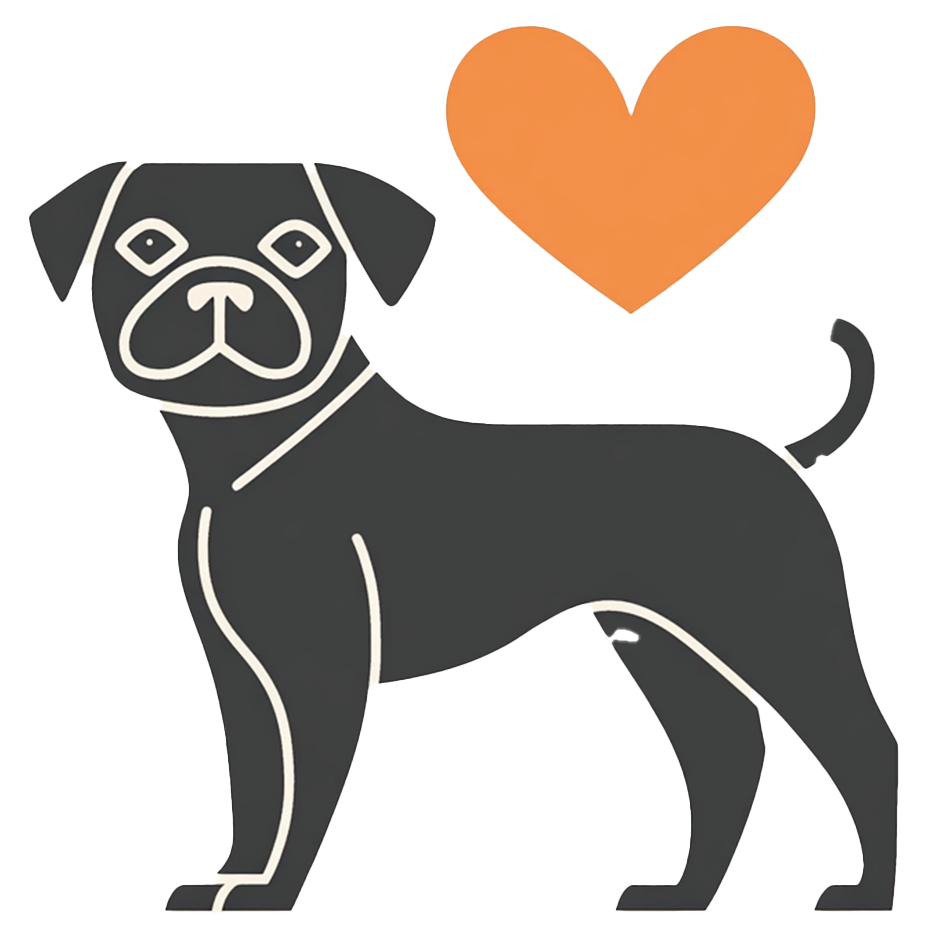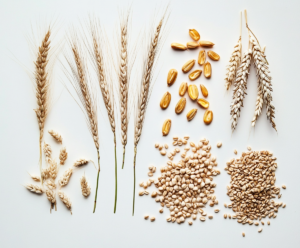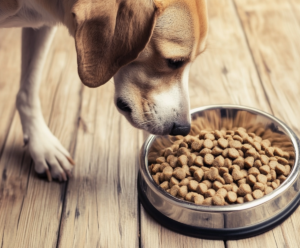Hey there, fellow dog lovers! 😊 It’s Rachel here, the proud mum of two cheeky chaps, Lando and Nico. Over my 15 years of navigating the wonderful (and sometimes chaotic) world of dog ownership, from dealing with Bruno’s boisterous antics to Reuben’s impeccable manners and Brian’s bulldog stubbornness, I’ve learned a thing or two about what goes into our furry friends’ tummies. Recently, I’ve been pondering over the grain-free trend that’s taken the dog treat market by storm. Are grain-free dog treats truly healthier, or are we being led down the garden path by clever marketing? Let’s dive in together and unpack the facts!
Understanding Grain-Free Diets
First things first, what exactly are grain-free diets? Simply put, grain-free dog foods and treats are formulated without common grains like wheat, corn, rice, barley, and oats. The idea stems from the belief that dogs, being descendants of wolves, are natural carnivores and therefore don’t require grains in their diet. This concept has gained traction over the years, leading many pet parents to switch to grain-free options in hopes of providing a more “natural” and healthier diet for their pups.
The popularity of grain-free diets has skyrocketed, fuelled by claims of benefits such as improved digestion, reduced allergies, healthier skin and coat, and better overall health. The shelves are brimming with grain-free options, and it’s easy to get swept up in the hype. But is there solid evidence to support these claims, or are we simply buying into a trend?
The Rise of Grain-Free Dog Foods and Treats
Let’s be honest, we’re all a bit susceptible to clever marketing, especially when it promises the best for our beloved pets. The pet food industry is well aware of this and has capitalised on the grain-free movement. According to the Betterpet article on grain-free dog food, grain-free products have become a significant market trend, often propelled more by marketing strategies than by genuine nutritional science.
The term “grain-free” has been positioned as synonymous with “premium” or “healthier,” but this isn’t necessarily accurate. Many grain-free dog treats and foods replace grains with other carbohydrate sources like potatoes, peas, lentils, or legumes. These substitutes may not offer any additional health benefits and, in some cases, could introduce new health concerns. It’s a classic case of swapping one ingredient for another without fully understanding the implications.
Marketing tactics often play on our desire to provide the best for our dogs, using buzzwords and appealing imagery to influence our choices. It’s essential to look beyond the packaging and scrutinise the actual nutritional content of these products.
Health Risks Associated with Grain-Free Diets
Now, here’s where things get a tad worrisome. In recent years, there have been growing concerns about the potential health risks associated with grain-free diets. The U.S. Food and Drug Administration (FDA) began investigating reports of canine dilated cardiomyopathy (DCM), a serious heart condition, in dogs eating certain pet foods labeled as grain-free.
The Preventive Vet provides some eye-opening statistics: approximately 90% of dogs diagnosed with DCM were on grain-free diets, and a whopping 93% of these diets included peas, lentils, or other legume seeds as main ingredients. These numbers are quite alarming and suggest a potential link between grain-free diets and heart disease in dogs.
So, what’s the connection? One prevailing theory revolves around taurine, an essential amino acid crucial for heart health. Taurine deficiency has been linked to DCM in dogs. Some grain-free diets might not provide adequate taurine levels or could contain ingredients that interfere with its absorption. Ingredients like peas, lentils, and legumes, commonly used in grain-free foods, may inhibit taurine absorption, leading to deficiencies.
While the exact cause-and-effect relationship isn’t fully understood, the correlation between grain-free diets and increased DCM cases is significant enough to raise red flags. It’s a classic example of unintended consequences arising from dietary changes made without comprehensive scientific backing.
Expert Opinions on Grain-Free Diets
Seeking clarity, I delved into expert analyses to get a better grasp of the situation. Dr. Lisa Freeman, a veterinary nutritionist quoted in the American Kennel Club (AKC) article, provides valuable insights. She discusses the concept of BEG diets—Boutique companies, Exotic ingredients, and Grain-free diets—and highlights how these factors might contribute to nutritional imbalances.
Dr. Freeman explains that many grain-free diets come from smaller companies that may not have the resources to conduct extensive nutritional testing. They might use exotic ingredients like kangaroo, lentils, or chickpeas, which haven’t been thoroughly studied in canine nutrition. These ingredients could lack essential nutrients or interfere with nutrient absorption, potentially leading to deficiencies.
Similarly, Dr. Richard Patton, an animal nutritionist featured in the Dog Food Advisor, cautions against the high-starch content in many grain-free alternatives. He points out that swapping grains for ingredients like potatoes or sweet potatoes doesn’t necessarily reduce the carbohydrate content and may not offer any health advantages. In some cases, these high-starch ingredients could contribute to obesity and other health issues.
These expert opinions suggest that grain-free diets aren’t inherently superior and might, in fact, pose risks if not carefully formulated. It’s a sobering reminder that well-intentioned choices can have unintended consequences when not grounded in solid nutritional science.
Common Misconceptions About Grain Allergies
One of the primary reasons many pet owners opt for grain-free diets is the belief that grains cause allergies or intolerances in dogs. However, food allergies in dogs are relatively uncommon, and when they do occur, grains are often not the main culprits. Proteins like beef, dairy, and chicken are more frequently responsible for allergic reactions.
Dr. Leslie Brooks, a veterinarian quoted in the Betterpet article, emphasises that environmental allergens—such as pollen, mould, and dust mites—are more likely to cause allergic symptoms in dogs than food ingredients. She advises that only dogs with confirmed grain allergies might benefit from grain-free diets, and such cases are quite rare.
Eliminating grains without a specific medical reason could deprive your dog of valuable nutrients. Grains can be an excellent source of fibre, vitamins, and minerals. They contribute to a balanced diet and can aid in healthy digestion. It’s essential to consult with a veterinarian before making dietary changes based on assumptions or marketing claims.
My Personal Experience with Grain-Free Treats
Now, onto a more personal note. After hearing so much about grain-free diets, I decided to give grain-free treats a whirl with Lando and Nico. They’re always up for a new snack, and I was curious to see if there’d be any noticeable benefits.
At first, everything seemed normal. The boys eagerly gobbled up the new treats (no surprise there!), and I kept a close eye on any changes. Over several weeks, I monitored their energy levels, coat condition, digestion, and overall behaviour. To be honest, I didn’t notice any significant differences compared to when they were enjoying their regular, grain-inclusive treats.
In fact, Nico, my little bundle of mischief, seemed to develop a bit of an upset tummy—nothing drastic, but enough to catch my attention. It could have been coincidental, but it made me question whether the grain-free treats were the best choice for them.
Reflecting on this experience, I realised that I had been influenced by the hype without solid evidence that grain-free was better for my dogs. Given that neither Lando nor Nico has shown signs of grain allergies or sensitivities, sticking to their regular diet seems more sensible.
Making Informed Decisions for Your Dog
Every dog is unique, and what works for one may not work for another. It’s crucial to make dietary decisions based on reliable information and professional advice rather than trends or marketing messages. Here are some steps to consider:
- Consult Your Veterinarian: Before making significant changes to your dog’s diet, have a chat with your vet. They can provide guidance tailored to your dog’s specific health needs.
- Read Labels Carefully: Don’t be swayed by buzzwords. Examine the ingredient list and nutritional content to ensure the food meets your dog’s requirements.
- Monitor Your Dog’s Health: Keep an eye on any changes in your dog’s behaviour, digestion, skin, and coat when introducing new foods.
- Beware of Fad Diets: Just like in human nutrition, fad diets come and go. Base your choices on science and expert advice rather than trends.
Making informed decisions ensures that we’re providing the best care possible for our four-legged companions. After all, they rely on us to make the right choices for their health and happiness.
Conclusion and Call to Action
So, are grain-free dog treats truly healthier? The evidence suggests that they may not offer the benefits we hoped for and could potentially introduce new health risks. While the idea of grain-free diets might sound appealing, it’s essential to look beyond the marketing and consider the scientific findings and expert opinions.
I’d love to hear your thoughts and experiences with grain-free diets or treats. Have you tried them with your pups? Did you notice any changes? Let’s get the conversation going in the comments below!
If you found this post helpful, don’t forget to subscribe to my blog for more insights, personal stories, and the occasional doggy shenanigans. Together, we can navigate the world of dog ownership with knowledge and a bit of humour. Thanks for reading, and give your furry friends a belly rub from me! 🐾








